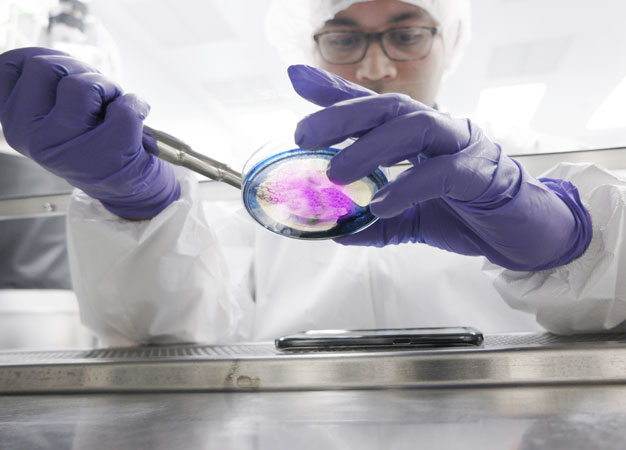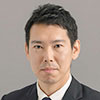Mechanical vibrations offer a gentler way to detach cells from culture dishes
Published online 29 September 2017

A scientist working with cultured cells in a clean room. Researchers at Keio have found a way to harvest healthier cells using ultrasonic vibrations to gently remove them from their dishes.
© E+/Getty
A gentler method for removing cultured cells from their dishes that enables harvesting of stronger and healthier cells has been developed by researchers at Keio University1.
Scientists have been culturing cells in dishes and flasks for more than a century, but the emerging technologies of tissue engineering and regenerative medicine are producing new challenges since they require a huge number of cells for a single treatment. For example, about a billion cells need to be grown to produce new heart muscle to treat a patient with weak myocardial tissue.
Cells anchor themselves to the surfaces of culture containers using proteins in their outer membranes. Researchers typically use an enzyme called trypsin to cut those anchors and liberate the cells when they are ready to be transplanted into a recipient. This enzyme, however, often damages cells, especially the proteins on their surface.
Now, researchers led by Kenjiro Takemura of Keio University have devised a less disruptive method that uses ultrasonic vibrations to release cells from culture dishes, which better preserves their health and function.
Takemura is not a cell biologist, but Keio colleague Yuta Kurashina thought his expertise in ultrasonics could lead to a useful alternative to trypsin. "I've been working on ultrasonic actuators for almost 20 years ― since I was a student," says Takemura. The two researchers conceived an approach in which the culture surface is cooled, causing cells to loosen their grip, and then controlled mechanical vibrations are applied to shake the cells free.
An initial demonstration with mouse muscle cells showed that this gentler treatment made a significant difference. Although the relative number of detached cells was about 23 per cent lower for this new approach, the cells were generally healthier than those that had been exposed to trypsin. Their initial survival rate was nearly 20 per cent higher, and they had higher proliferation rates after several days of cultivation. The cells detached by vibration also retained key structural features that were more likely to be lost after detachment by trypsin.
Takemura is optimistic that this method will improve the overall efficiency of cell preparation for clinical applications. "Automation of cell culture should be easier with our method, which may make the mass culture of cells feasible," he says.
His team's top priority is moving from the stainless-steel culture surfaces used in this proof-of-concept study to the plastic surfaces used in conventional cell-culture systems. Preliminary data indicate that this transition should be smooth, making the approach more accessible to the broader cell-biology community.
About the researcher

Kenjiro Takemura ― Associate Professor
Faculty of Science and Technology, Department of Mechanical Engineering
Kenjiro Takemura received his PhD degree in 2002 from Keio University. Since 2008, he has been with the Department of Mechanical Engineering, Keio University, where he is an associate professor.
Links
Reference
- Kurashina, Y., Hirano, M., Imashiro, C., Totani, K., Komotori, J. & Takemura, K. Enzyme-free cell detachment mediated by resonance vibration with temperature modulation. Biotechnology and Bioengineering 114, 2279-2288 (2017). | article